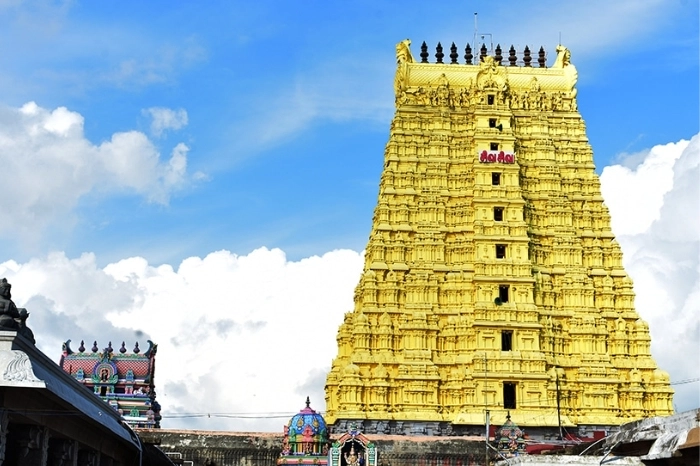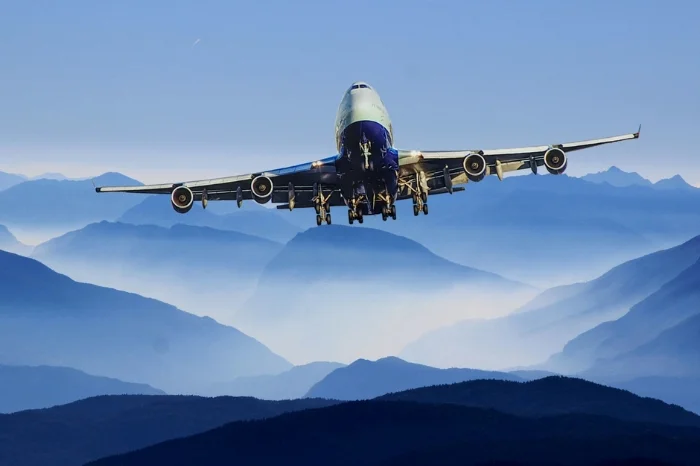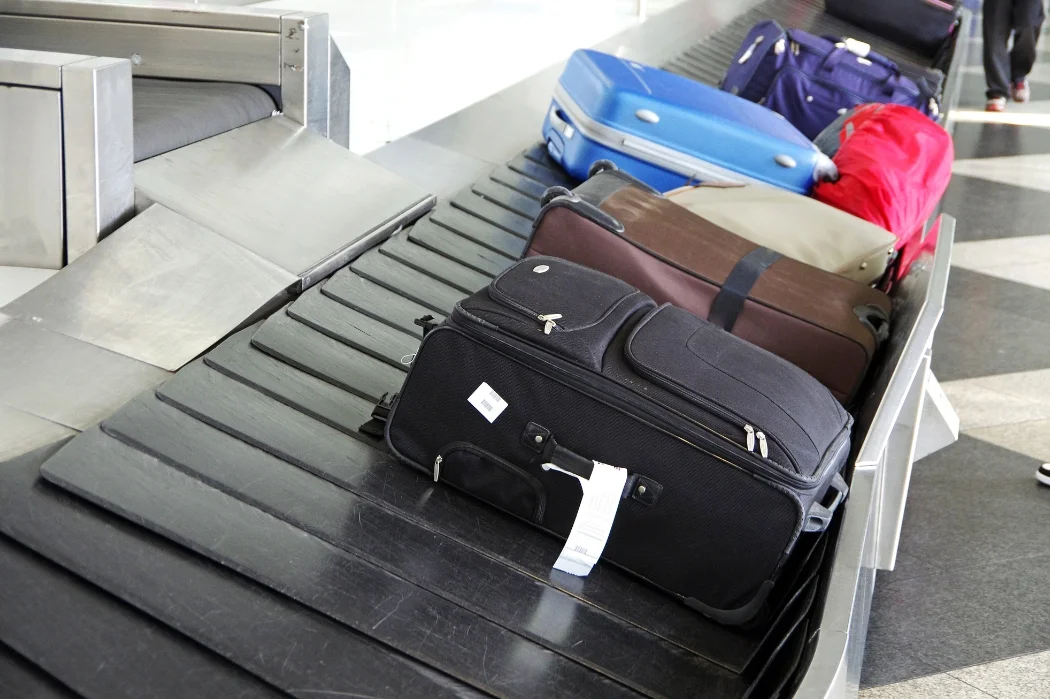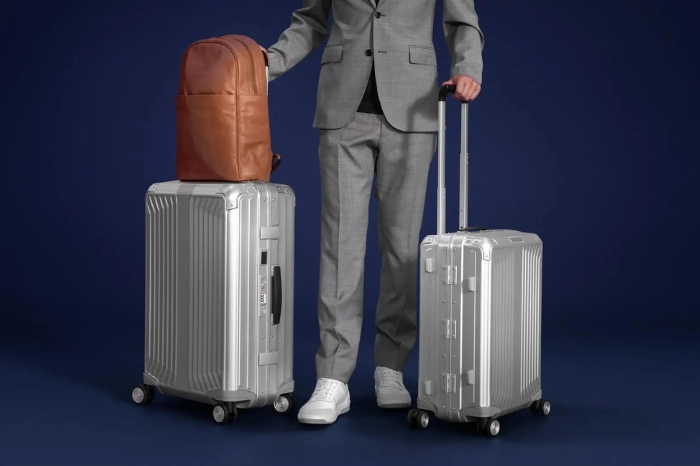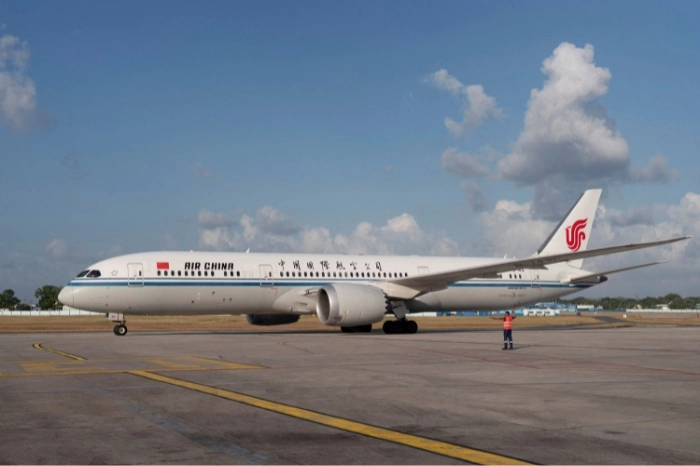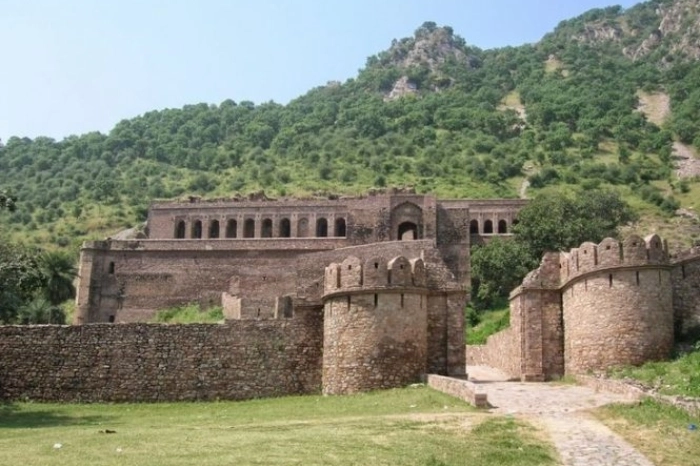- 03 Oct, 2024
With neon-lit streets and high-end metropolitan vibes, the capital city of Japan, Tokyo is the world's largest city serving the city view with a blend of modern art and historical sights. From the Tokyo Sky Tree to Sensoji Temple, this Japanese center is where chaos meets tranquility, and even for the kids popular attractions, like, Tokyo DisneySea. This top destination will always leave tourists wanting more, and being a gastronomic giant, its culinary appeal has raised the bar. This detailed guide will take you on a swirl of what activities are lined up, along with the best accommodations, some itineraries, and the appropriate travel season.
Best Time to Visit Tokyo
Looking for the best time to plan your voyage to Tokyo is like sailing in the vast sea of seasons and their ultimate beauty, as every time of the year brings something new, something beautiful. The best season to witness the sparkle of cherry blossoms plus excellent temperature to be a wanderer on the Tokyo streets. However, you may be at the disadvantage of streets flocked with tourists and accommodations being booked in advance. Another appropriate time to journey around this Japanese capital is November, when the city is illuminated with autumn leaves, Koyo, but it also experiences a flood of visitors.
Tokyo's Seasons and Weather
Tokyo, a fusion of different seasons with varying beauty aspects, serves you with a buffet of seasons and their respective weathers. So, indulge in the given discussion and make travel plans accordingly.
- The season of spring lives from March to May ranging in temperature from 2 to 24 degrees, but also bearing the crown of peak season.
- From June to August, Tokyo experiences heatwaves during the summer season with temperatures between 16 and 30 degrees.
- Fall falls in the months of September to November, measuring the temperature from 7 to 27 degrees, making the weather comfortable for an evening stroll.
- The cold breeze season of winter comes from December to March with -6 to 20 degrees, and also the sunniest weather with pristine air.
Peak vs. Off-Peak Travel Season
Peak Travel Season: From mid-June to mid-September and late April to May, you can go sightseeing at Ueno Park or Tokyo Tower or a food spree at Tsujki Outer Market. Spring is the most popular season, bringing in tons of visitors, enchanted by the beauty of cherry blossoms in parks.
Off-peak travel Season: The time to visit Tokyo in peace is winter, falling from October to February. The crowd is smaller, but the preparations for New Year lights up everything. So, if you are a fan of a trip with a lesser flock of tourists, this is your chance.
Getting Around Tokyo
To maintain the status of being a top travel destination and to raise the bar among tourists, Tokyo City has been facilitated with a dense network of trains, subways, and bus lines. JR Yamanote Line, the loop connecting multiple city centers with around 13 subway stations, you will have plenty of options on your table to choose from. A prepaid Suica or Pasmo Card will be your best purchase in this touristy place, as they will let you hop onto the train stations like pro, but also subway travel will become easier and quicker, so swipe the card and roam around.
Public Transportation in Tokyo
Tokyo, a city that is always sprawling with international visitors, serves everyone with an intricate network of public transportation. This indicates no worries about expensive taxis or private cabs, as loops of trains and subways are your rescuers. So, be a smart deviser and gather everything you need to know about going out and about in this Japan capital--
- The Japan Rail (JR) Network of trains is spread all over the country and the JR East is prominent in the east region, Tokyo, so if you wish to journey around the city, this train network can be your best bet.
- For Subway travel, the Tokyo Metro and Toei Transport are the underground systems covering the city in an intensive way.
- Buses can be a good option to alternate to the trains, but only if you are residing immediately outside the city center.
- Local railway networks can be used to explore the hidden gems and mingle with the local crowds on the way.
- You can choose to rent a taxi or private cab, it will allow you to have the steering of your journey in your hands, but the prices can be a bit high and unaffordable in some regions.
What to Do in Tokyo
In the city with endless possibilities and timeless charm, Tokyo, you can find it hard to plan your day, as the urge to explore one more spot can be real. Tokyo Skytree, the tallest tower in the world, will give a spectacular panorama of the city, and then a picnic at Shinjuku Gyoen National Garden to relish in the peace and escape the chaos. Even for shopaholics, it is no less than paradise with Kappabashi Street for foodies, the stylish malls in Harajuku and Shibuya, and not to forget, at the end of this shopping spree, seeking blessings at Senso-ji.
Historical and Cultural Attractions
Being an admirer of ancient ruins and obsessed with finding out about diverse cultures, Tokyo's landmarks must be on your to-do list. So, write down these “must-see” spots for your trip.
- Meiji Jingu shrine: In contrast to the modernity of Harajuku, this century-old shrine in the middle of a forest, is a peaceful spot of historical importance.
- Sensoji Temple: Nestled in the Asakasu district, the oldest religious building represents a blend of culture with historical architecture.
- Tokyo National Museum: Home to over 100,000 artifacts, this large complex is fractionated into six separate buildings.
- Imperial Palace: A Palace where history meets culture in the most royal way, the primary residency of the Japan Emperor, Imperial Palace.
Modern Landmarks and Skyscrapers
Although Tokyo is home to numerous archaic landmarks, its modernity does not lag, and around 160 skyscrapers lining the city line are the proof. A plethora of modern landmarks can be the highlight of your day-to-day itinerary, so buckle up and find out more--
- Tokyo Tower: Proof of modern architecture and a developed city, the world's tallest tower and Tokyo's iconic landmark, is the Tokyo Tower.
- Azabudai Hills Mori Jp Tower: Among all the skyscraper Tokyo possess, this one is the tallest building and also the world's largest skyscraper by floor area.
- Seikado Bunko Art Museum: A treasure house of East Asia culture with modern architecture and a collection of a wide range of media.
Shopping Districts in Tokyo
Beware, Shopaholics!! The shopping districts of Tokyo are coming for you with their vibrant shops and mouth-watering food stalls. So, dive into the sea of Japanese fashion at these famous regions of Tokyo--
- Shinjuku: A major hub of dozens of departmental stores to branded stores, outlets of electronic retailers, boutiques, and underground shopping arcades
- Shibuya: Heart of youth fashion, Shibuya is also referred to as the birthplace of Japan's fashion trends, with high-end designer brands making the atmosphere lively.
- Harajuku: The meeting point of upscale boutiques, cafes with youth fashion, and counter-culture rambled with teenage crowds, Harajuku has everything for everyone.
Entertainment and Nightlife
In Tokyo, the visitors must follow a jam-packed schedule to witness the nightlife with clubs, bars, and manga cafés. So, enter the chaotic moonlight of this Japanese capital by keeping these highlighted areas as your night itinerary:
- Clubs: Dance your night out at Tokyo's famous clubs, WOMB, 10AK, HARLEM, and Roppongi, and let the party begin.
- Bars: Entertainment must go on, and these exciting bars, including the small bars in Golden Gai, will give you a taste of Tokyo's nightlife with a swirl of whiskey.
- Night-cruises: If you are a fan of enjoying candlelight dinner with an oceanic view, the book is a night-cruise.
Best Things to Do in Tokyo
Living the life of a Pharaoh and stepping foot in Tokyo? Then some of the most exciting things, like, a tour around Tama Zoological Park a trek over Mount Takao, or even a stroll around Shinjuku Gyoen National Garden, are waiting for you. Peaking over the Tokyo Skytree for a magnificent view or visiting the Shibuya Scramble Crossing, showcasing the vibrant energy of Tokyo, are not-to-be-missed itinerary items. You can also add Mori Art Museum and the National Museum of Modern Art.
Must-Do Experiences in Tokyo
Joining a tea-testing event and a visit to a tropical greenhouse, are the major experiences to come back with a bundle of Tokyo memories. To be sure that you do not miss any of it, keep your list updated--
- Harmonica Yokocho: A 1940s post-war flea market transformed in the 90s into a cluster of narrow alleys with bustling bars and high-end restaurants.
- Koganeyu: You must plan a trip to this standing bar and community events space with a side touch of Tokyo's sento culture.
- Sakurai Tea Experience: Tokyo and tea culture go hand in hand, so have a taste of the Japanese “way of tea” in an intimate eight-seat cafe.
- Kuge Crafts: Tokyo's ancient mending pottery art, sprinkled with gold dust and lazed with lacquer.
Unique Tokyo Experiences
Not only for its divine heritage and preserving the historic ashes but also for some “cool” or rather “unique” experiences, Tokyo has made its way into people's hearts. So, do not miss out on these weird experiences in this capital city of Japan--
- Real-life Mario Kart: Collect your international driver's license before entering this city, as the streets are going to be filled with real-life Mario Kart tours.
- Eating at a Robot Restaurant: One of the most over-the-top experiences is enjoying your favorite delicacies at the "Samurai Restaurant".
- Kawaii Monster Cafe Pop-up Show: Up for a quirky dining experience? Then reserve a spot at Kawaii Monster Cafe with rainbow and monster-themed foods and drinks, also out for parties.
Best Places to Visit in Tokyo
Sights including the Tokyo Skytree, Ueno Park, and Tsukiji Fish Market have leveled up the tourism industry of Tokyo, a city enchanted with magic. This harmonious blend of tradition and modernity serves you with an array of must-visit spots served on a silver platter sided with delicacies like Sushi and Udon noodles. Places like Akihabara, a vibrant district, and Ginza, a large neighborhood and home to eclectic stores, are the best spots for every tourist, so make sure to include them.
Historical Sites
From landmarks to towers and even temples of Tokyo are the witness of history, showcasing and preserving its ashes in the most divine way, so before you plan your vacation, underline these archaic regions:
- Meiji Jingu Shrine: Hosting a multitude of festivals, this shrine has incredible architecture nestled in a 170-hectare forest and has been there since 1920.
- Tokyo Metropolitan Government Building: This 243-meter-tall building offers a free view of skyline, and is a historical monument of political importance.
- Edo Tokyo Museum: Representing the history and culture of Edo with life-sized models of houses and more, including, the museum Laboratory.
Top Attractions
Tokyo has a sea of attractions contributing to its tourism industry, be it a historical landmark or a symbol of modernity, it is an epitome of diversity. Its Olympic sites mark the history of the Olympics to a serene ambiance at Hamarikyu Gardens and give sites for romantic dates including Tokyo Skytree. Keeping the beautiful Tokyo Tower in the itinerary is a must, lined up with a smooth cruise, along the Sumida River will make your evenings delightful and memorable. The most elegant and luxurious side of Tokyo is presented by Ginza with its ultimate shopping opportunities and gourmet cuisines, showcasing modernity to its fullest. One of the hidden gems, which is the top attraction, not found yet, is Jiyugaoka, a stylish district of lifestyle stores and appealing eateries giving a sense of sophisticated-everyday-life.
>>Tokyo has a sea of attractions contributing to its tourism industry. For a curated list of must-see spots, check out the 15 Best Places to Visit in Tokyo.
How Many Days to Spend in Tokyo?
A major cultural center, as well as the Capital of Japan, Tokyo, is the go-to destination for tourists across the world. This capital is brimmed with eclectic spots from the Sumida River to Tokyo Skytree! Each location is an add-on reason for tourist visitors to head toward Tokyo and spend their vacations. No matter how long your vacation is, it will always appear to be a short trip! Let's pull back the curtain and know how many days are sufficient to hop around the city, things to do, accommodation available, and other things: dive and get acquainted with:
How Many Days Are Enough in Tokyo?
Based on several recommendations, 4-5 days to spend in Tokyo would be sufficient. During these days, you can explore the city and travel to nearby regions, for example, Hakone, Mount Fuji (Situated 100 km west of Tokyo), or Nikko. No matter how long you stretch your travel, there'll always be that feeling of wanting more!!
Nevertheless, if you wish to immerse yourself in the regional culture, fests, etc., consider spending 12-14 days, and you will experience the magic. These days will not let you just see the city but feel it. During these days, you can transition your visit to Tokyo from a "Tourist destination" to a "home destination."
Recommended Itinerary Duration
Let's get an idea of how you can spend your remarkable days in Tokyo, where you can explore the regional culture, diverse land, famous streets full of artists, an array of restaurants, shops, and markets from where you can purchase gifts, presents, etc. Please take note of the following itineraries:
2-Day Itinerary
- These two days might not be sufficient to cover the entire Capital city, Tokyo; thus, first, get settled in the central region so you can cover almost every part of it.
- These two days will assist you in gaining insight into traditional as well as modern Tokyo.
- On day 1, prefer to visit modern Tokyo in the city's western region.
- Visit Traditional Tokyo on the Eastern Side on Day 2.
3-Day Itinerary
- On day 1, you can explore Central Tokyo, including Shibuya and Harajuku. You can also hop around Meiji Shrine, Yoyogi Park, etc.
- On day 2, Explore Old Japan in Northern Tokyo, such as Senso-Ji Temple and Okonomiyaki.
- On day 3, visit Iconic and Imperial Tokyo, including Tsukiji Fish Market, several gardens, Tokyo Tower, Roppongi, and more.
5-Day Itinerary
- Hop around the modern city on the western side of Tokyo on the first day.
- On Day 2, get mesmerized by stunning views on the eastern side.
- On Day 3, take a trip outside of Tokyo to Mt. Fuji, Nikko, Kamakura, etc.
- The other day or on Day 4, you can visit the Imperial Palace Area and Shinjuku.
- On day 5, visit Meguro, Daikanyama, Ebisu, etc.
Also Read: What to Do in Tokyo for a Week: A Complete 7-Day Itinerary
Where to Stay in Tokyo
Tokyo is not a small town but huge. Natives are closely aware of hotels, roads, the region, connectivity, etc., but it might be a herculean task for tourists. Keeping diverse land in mind, many tourists raise concerns about where they can stay in To
- The preferred regions to stay in include Shibuya or Roppongi, Shinjuku, the Tokyo Station Area, and Ginza/Hibiya. Kyo, so take a careful observation of the pointers highlighted below:
- Even if you choose other places to stay, ensure they are near the Yamanote Line, which is perceived to be the crucial transportation segment in Tokyo's Capital city.
Best Areas to Stay in Tokyo
Before they hit the road to Tokyo, anyone is often concerned about the suitable areas where they must stay in Tokyo, which are tourist-friendly and have all the possible connectivity, accommodations, airport or bus stand, budgetary hotels, and other things.
- Marunochi— This place is nestled in central Tokyo and to get the best experience, this place boasts many places to visit, for example, Marunouchi Brick Square, Imperial Palace, etc.
- Shibuya— This place is prominent for its nightlife. Along with this, adventurers get ready to experience spectacular views at Shibuya Sky.
- Shinjuku— You can also prefer this place to stay in Tokyo, as it is prominent for its bustling streets, iconic train stations, and other things.
Types of Accommodation
The most herculean task for any foreigner visiting Tokyo after finding places to stay is finding types of accommodation in the capital city of Japan. This comes into the picture primarily because of easy to and fro movement from the Hotel to the preferred destination without any hassle.
- JR Kyushu Hotel Blossom Shinjuku— You can pick this hotel located near Shinjuku Station, where you can find excellent rooms.
- Sakura Class Hotel Shinjuku East Annex— Get excellent views outside of hotel rooms and the market is close to it.
- Hostel— You can also find hostels that are low-cost as well as short-term shared sociable lodgings where you can rent a bed, kitchen, etc.
Food and Drink in Tokyo
When it comes to delicacies, they are an art form in Japan, and it may take ages to find the same taste in any other country than Japan, especially in its capital, Tokyo. No matter what you look for, for example, authentic local eateries, dazzling dinner shows, or cocktails, the city has something special about all of them.
Must-Try Traditional Dishes
Most chefs available in the hotels, restaurants, etc., are well-trained, and in each of their recipes, they pour the regional taste so if anyone returns to their hometown, they would always wish to return to the city and taste the same food again!!
- Sushi— In Tokyo, Sushi can be available in every range, for example, from low to High; it depends upon the place from where you get it!
- Ramen— It is a bowl of wheat noodles in a bowl. You can find tempting bowls of ramen all across Tokyo. You can also get toppings for a better taste bud.
- Tendon—This dish is a bowl of rice topped with Tempura, a Japanese dish whose name comes from the words "Ten" and "Don."
Best Areas for Dining in Tokyo
Tokyo boasts world-renowned restaurants, cafes, bars, etc., ranging from districts that are ideal for food explorers in the new city. Hold your horses; below are some of the best areas in Tokyo that you can pick to fill your appetite;
- Ginza Corridor Street—This 400-meter corridor is the most visited spot because it has concentrated hotels, bars, and restaurants. You can taste Spanish and French foods and drinks, including Shaoxing Wine.
- Yotsuya Arakicho— You can find an array of restaurants, from reservation-only hideaways to hotels that permit a limited number of customers at once.
- Niku Yokocho, Shibuya— Are you searching for non-vegetarian food in Tokyo? This place is apt! There, you may get above 30 prominent meat restaurants.
Street Food and Markets
Tokyo lures many tourists as it boasts the active volcano Mount Fuji, and it expands to the famous street and market that compels tourists to spend extra bucks to taste every regional food that comes their way.
- Ameya Yokocho, Ueno—Many locals grab fresh fish and pickles while tourists get them on their way to the zoo in Ueno Park.
- Tsukiji Outer Market, Tsukiji— You can hop around the outer market of Tsukiji and taste the best delicacies in Tokyo, including fish.
Cultural Etiquette and Travel Tips
Although Japanese people are warm towards tourists visiting Japan, an unintentional gesture can make them feel insulted. The most crucial aspect of traveling to Japan is to keep in mind some cultural etiquette, including some travel tips that can let you hop around the city conveniently without any hassle. So, keeping these facts in mind, below is a discussion based on which you will learn some basic etiquette in Tokyo:
Common Etiquette in Tokyo
- Be Quiet on Public Transportation— You must avoid talking loudly with friends on the train, chatting on the phone, etc., while traveling either in a bus, train, etc. Also, determine that female-only carts are at the end of the train.
- Avoid leaving a tip— A tip may be a trend in other countries but in Japan, they usually don't accept them. There is nothing rude about it, it is just not expected in Japan.
- Be in a queue— You will find everyone to be lined up in a single queue waiting for a bus, train, etc., thus, do not try to skip the queue. You must wait for people to deboard from the train and then wait until it is your turn to get inside.
Dining Etiquette
- Before you step into the dining room, ensure to remove your shoes/slippers, etc.
- You will be served "Oshibori" or Hand towels for your hands.
- Say "Itadakimasu," meaning "I gratefully receive." before you proceed with the food.
- In between having food, you can leave your chopsticks on the "hashioki" or chopstick rest.
- Remember that if hashioki is disposable, you should split them horizontally and avoid rubbing them together.
- Avoid leaving chopsticks in the bowl, and do not stab your food.
Safety Tips for Tourists
- Emergency Numbers— A natural phenomenon can occur from time to time; thus, if anyone wishes to get assistance from the officials, you can save some digits: Police 110/ Police Calls in English 03-3501-0110(For reporting traffic accidents, etc.), The Japan Helpline 0570-000-911 (active 24*7), Fire/Ambulance 119, Tokyo Metropolitan Medical Institution Information 03-5285-8181 (9:00-20:00).
- Earthquakes— Japan is prone to earthquakes, thus, anyone visiting Japan must be aware of some basic strategies to adopt at the time of such activity.
Booking Flights to Tokyo
Before anyone creates a to-do list in Tokyo, they always come up with a similar type of concern, which is ways to book a flight, things to consider before initiating a booking, tips for finding cheap flights, and other things. So, keeping all such facts in mind, take reference on the same by reviewing the following sections:
Tips for Finding Cheap Flights
- Red-Eye Flights— You can prefer a red-eye flight to travel to Tokyo from your region. Get ready to experience jet lag, but it's gonna be worth it.
- Advance Reservations— Initiate your reservation to Tokyo in advance to find the best airline's results. You can save a lot of bucks along with getting additional services from your airline including extra baggage allowance, etc.
- Apply Miles– If you have miles with your concerned airline, trade them in to get discounted flight fares.
- Be flexible with Dates— You must not be rigid when it comes to dates. Be flexible, and you will get the best flight results.
What to Consider When Booking Your Flight
- Required Documents— You must create a file adding all the necessary documents so you can present them to the official when necessary.
- Available flights— Sometimes, seats are unavailable near the departure dates; thus, ensure to grab tickets a month or two before it.
- Off-Season Travel— If you travel during the off-period, you can grab the best deals, and it will help you make your itinerary budgetary.
- Medical Certificate— You need to get in touch with the concerned authority to find out what medical certificates are necessary to present in Tokyo to the officials.
- Seat Selection— If you have a long-haul flight, ensure to get the best seats onboard so you don't get tired.
Ready to Explore Tokyo?
Don’t miss out on the best travel deals! Book cheap flights to Tokyo now and start your adventure in one of the most exciting cities in the world. Secure your tickets today and save big on your next journey to Japan’s vibrant capital.
Contact us

